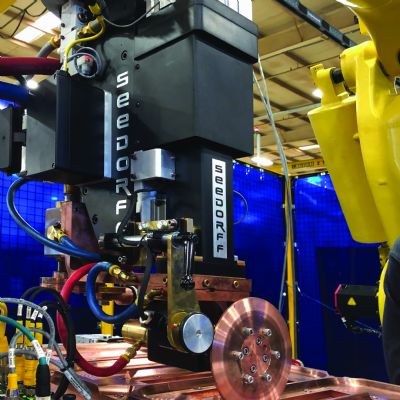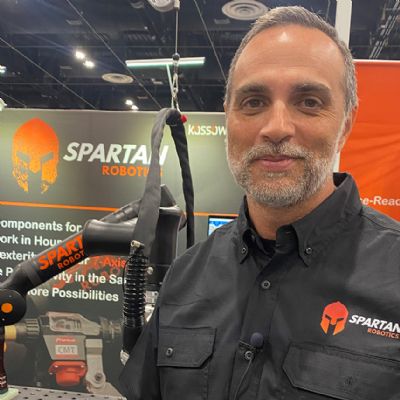Mythbusting Cobot Welding
March 5, 2025Comments
Some misperceptions exist about cobot welding related to safety, programming and the need for skilled labor. This article provides clarification.
Collaborative robots (cobots) have revolutionized manufacturing, offering accessible and efficient automation. When cobots first entered the market, manufacturers had many preconceived notions: that safety would not be an issue; that industrial robots were not user-friendly; and about the degree of difficulty in programming them.
You’ve probably heard these myths before, but the reality isn’t always so simple. That’s why modern cobots have been developed with solutions to common challenges.
Myth 1: Cobot Welders Are Safe Without Guarding
Many people believe that cobots don’t need guarding, because they’re designed to stop when bumped.
 It’s true that cobots stop when encountering resistance. Each arm axis is sensored with force detection so that if it encounters a certain degree of force, it will stop. Cobots are programmed with a specific speed limit—a top speed that they can reach—that helps prevent them from colliding with a human. The speed limit and the force detection contribute to making a robot collaborative.
It’s true that cobots stop when encountering resistance. Each arm axis is sensored with force detection so that if it encounters a certain degree of force, it will stop. Cobots are programmed with a specific speed limit—a top speed that they can reach—that helps prevent them from colliding with a human. The speed limit and the force detection contribute to making a robot collaborative.
However, welding introduces unique hazards that extend beyond physical collisions. When it comes to welding, some safety concerns still must be met because of the arc flashing. Arc flash and torch incidents remain serious concerns.
Modern cobots incorporate safety features designed specifically for welding environments. While cobots can operate in collaborative zones, the best solutions prioritize operator safety with options for guarding, arc-flash protection and ergonomic torch designs. These features ensure that automation doesn’t compromise workplace safety.
Myth 2: Cobot Welders Are Easy to Program
Many believe that cobots are simple to set up and program, making them a plug-and-play solution for any operator.
While it’s true that cobots, like industrial robots, come with teach pendants that simplify programming, operators still must interact with a tablet or device to confirm actions and movement. Welding is a precise skill, and programming a cobot for quality welds requires more than just basic robotics knowledge. Operators still must have welding knowledge and expertise.
Incorrect process parameters or torch angles will lead to poor results. Without the proper torch angle, wire-feed speed/amperage and voltage, an acceptable result will not be achieved, rendering weld defects such as porosity, undercut or lack of penetration.








